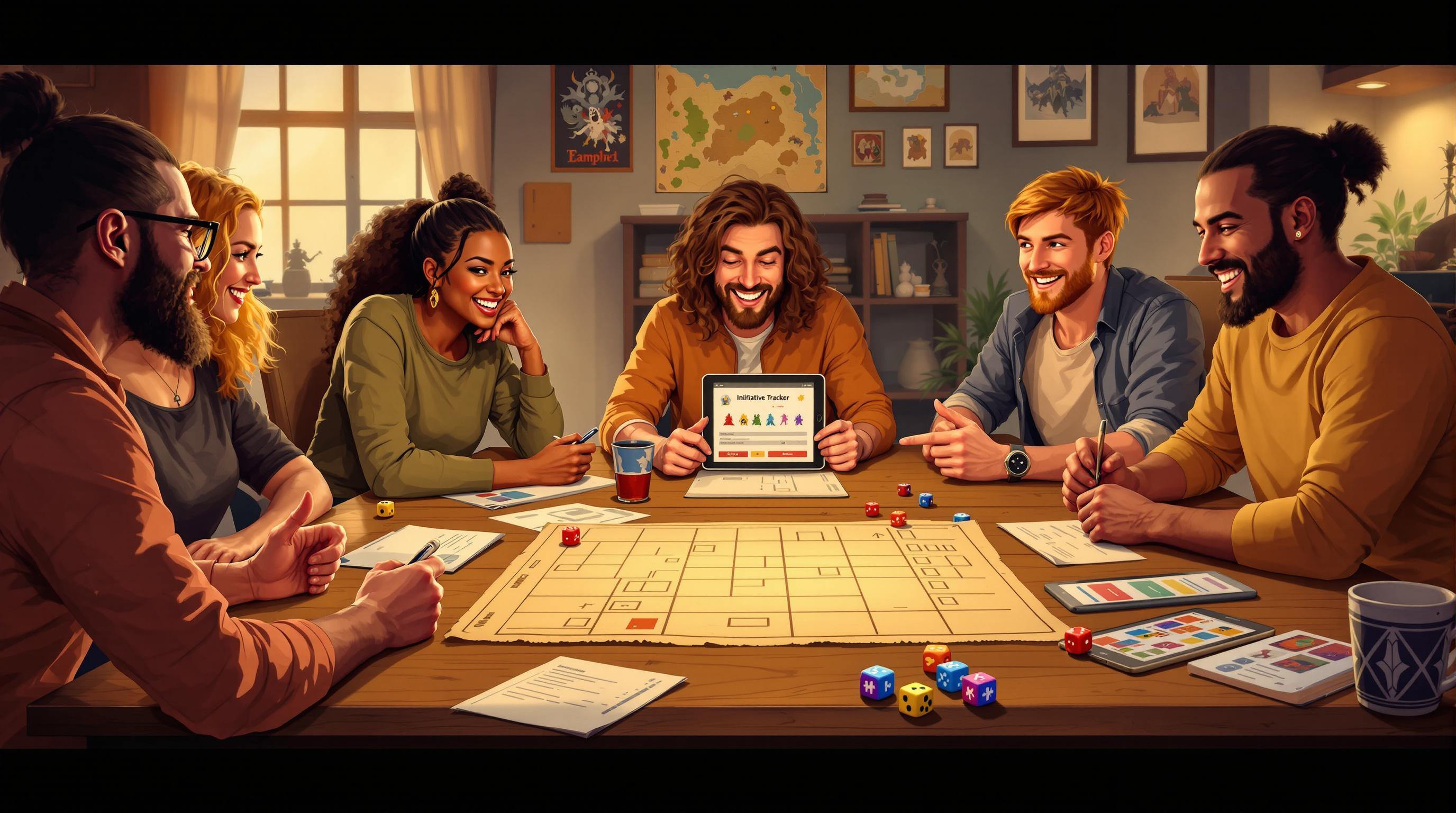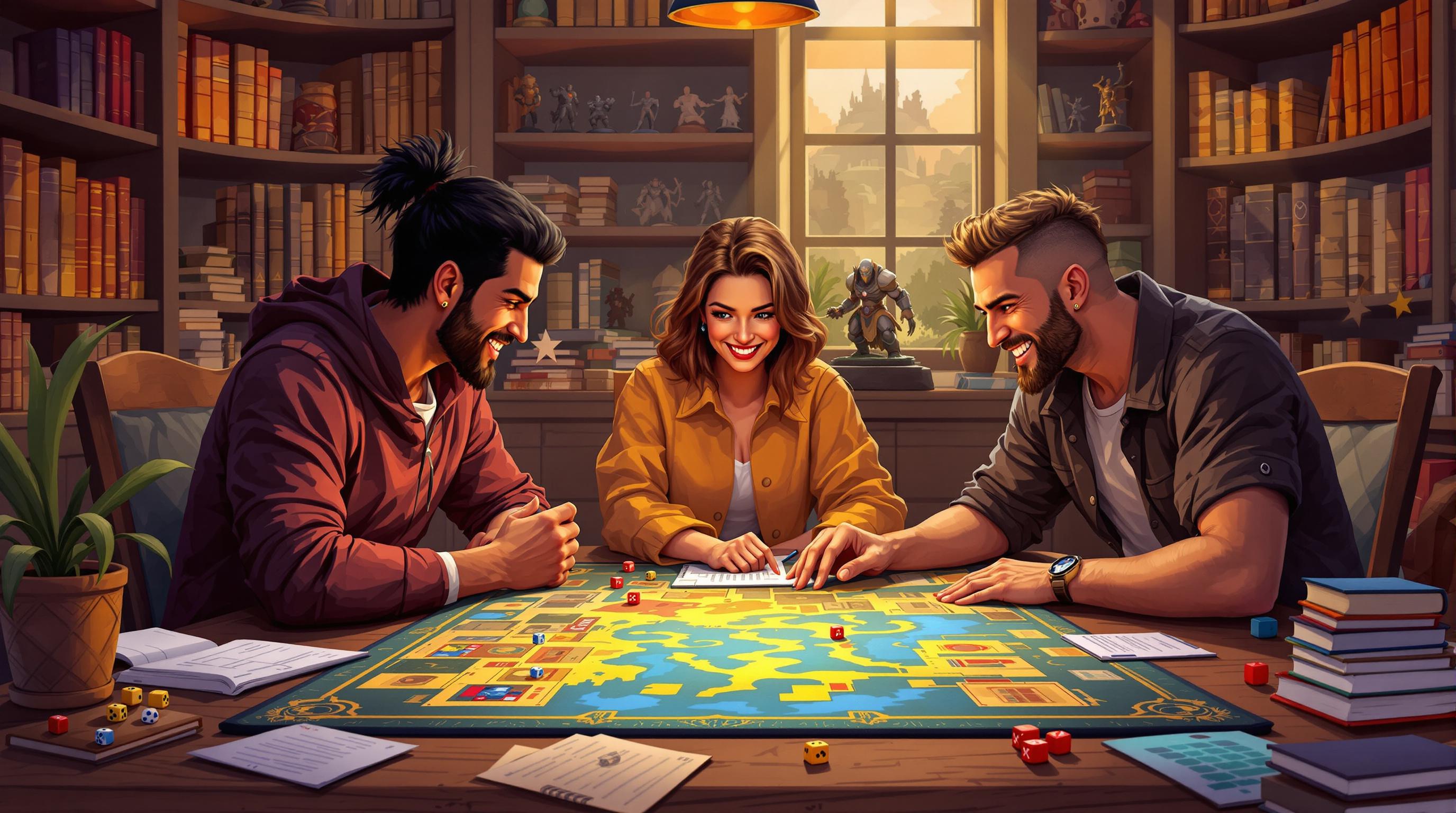- Small Groups (2-3 players): Focus on storytelling and flexible roles. Try Ironsworn or Fate Accelerated.
- Medium Groups (4-5 players): Balanced options like D&D 5E, Pathfinder 2E, or Call of Cthulhu.
- Large Groups (6+ players): Prioritize quick mechanics with Savage Worlds or collaborative play like Blades in the Dark.
Quick Comparison
| Group Size | Recommended Systems | Key Features |
|---|---|---|
| Small | Ironsworn, Fate Accelerated | Strong storytelling, flexible roles |
| Medium | D&D 5E, Pathfinder 2E, Call of Cthulhu | Balanced gameplay, diverse roles |
| Large | Savage Worlds, Blades in the Dark | Fast turns, collaborative storytelling |
Tip: Adjust encounters and use tools like Roll20 to match your group size for smoother gameplay.
5 AMAZING Alternatives to Dungeons and Dragons 5th Edition
Group Dynamics in RPGs
Group size plays a huge role in shaping how RPGs unfold. While many systems are designed for 4-5 players, smaller or larger groups bring unique challenges that require adjustments to keep everyone engaged.
Small vs. Large Group Challenges
Smaller groups (2-3 players) allow for more personal storytelling but come with their own set of issues. They often struggle to cover all key in-game roles, especially in fantasy RPGs where roles like healers, fighters, and specialists are crucial.
On the other hand, larger groups (6+ players) run into problems like:
- Slower combat rounds (taking 40-60% longer)
- Less time for individual contributions
- Difficulty reaching decisions
- Overlapping character abilities
These differences significantly affect how RPG systems balance complexity and storytelling.
Group Size Impact on Game Pacing and Engagement
"In larger groups, the GM's role shifts from storyteller to traffic controller. It's crucial to have systems in place to manage the increased complexity."
This explains why systems like D&D 5e suggest 4-6 players for the best experience. Even official organized play programs have reduced group sizes to improve gameplay, highlighting the importance of adjusting systems to fit group dynamics.
Smaller groups, on the other hand, move through the game more quickly due to:
- Faster decision-making
- Streamlined combat sequences
- Greater chances for individual roleplay
- Easier management of effects and conditions
Recognizing these pacing differences can help you choose systems that naturally align with your group size.
Selecting RPG Systems by Group Size
Choosing the right RPG system can make or break the experience, especially when your group size falls outside the typical 4-5 player range. The pacing and dynamics of gameplay shift significantly with group size, so picking a system tailored to your needs is crucial.
RPG Systems for Small Groups (2-3 Players)
Smaller groups thrive with systems that prioritize storytelling and offer flexibility in character roles. Ironsworn is a standout choice, combining engaging narrative mechanics with versatile gameplay. Another great option is Fate Accelerated, which uses an aspect-based approach, allowing players to fill multiple roles without being tied to rigid classes.
RPG Systems for Medium-Sized Groups (4-5 Players)
For groups of 4-5 players, the range of options is vast. Dungeons & Dragons 5th Edition continues to dominate, offering balanced combat and diverse character roles tailored for this size. Pathfinder 2E provides a more tactical experience while maintaining balance.
If your group leans toward mystery and horror, Call of Cthulhu is an excellent pick. It allows players to specialize in unique investigative skills, creating an immersive and tense atmosphere perfect for this group size.
RPG Systems for Large Groups (6+ Players)
Larger groups need systems that keep gameplay moving and ensure everyone stays involved. Savage Worlds is a great fit, thanks to its quick mechanics and innovative initiative system using playing cards, which helps maintain a brisk pace.
For narrative-driven groups, Blades in the Dark shines. Its crew-based framework ensures every player has a meaningful role, as seen in the popular Actual Play podcast "Friends at the Table."
| Group Size | Recommended Systems | Key Benefits |
|---|---|---|
| Small (2-3) | Ironsworn, Fate Accelerated | Flexible roles, strong storytelling focus |
| Medium (4-5) | D&D 5E, Pathfinder 2E, Call of Cthulhu | Balanced gameplay, dynamic party roles |
| Large (6+) | Savage Worlds, Blades in the Dark | Quick turns, collaborative storytelling |
The TTRPG Games Directory is a helpful resource for finding systems tailored to your group size, making it easier to match your player count with the right mechanics.
sbb-itb-b8b00a5
Modifying Systems for Group Size
Even the best systems often need tweaks to fit your group's size. Here are some ways to fine-tune gameplay for different group dynamics.
Adjusting Encounters and Challenges
Scaling combat encounters is key to keeping things engaging without making them overwhelming. For larger groups, add more enemies thoughtfully instead of just piling them on. A good rule of thumb: add 2-3 enemies for every player above the usual 4-5 player party. For skill challenges, slightly raise the difficulty by increasing DCs by 1-2 points for every two extra players. This keeps the stakes high.
Smaller groups? Focus on quality, not quantity:
- Cut down on enemy numbers but make them tougher.
- Introduce environmental hazards or NPC allies to fill in for missing roles.
Custom Rules for Smoother Gameplay
Big groups can benefit from simpler mechanics to keep things moving.
| Rule Modification | Description |
|---|---|
| 30-Second Turn Timer | Use a visible timer to keep combat turns quick. |
| Group Initiative | Roll one initiative for the whole party or enemies. |
| Simultaneous Actions | Let non-conflicting actions happen at the same time. |
| Shared Resource Pool | Combine healing or magic resources for easier tracking. |
Tools to Support Group Dynamics
Digital tools make managing large groups much easier. Platforms like Roll20 and Foundry VTT include features like automated initiative tracking and batch dice rolls, cutting combat management time in half.
For in-person games, tools like initiative trackers, digital character sheets, and shared note-taking apps help streamline play. These tools pair well with system-specific tips from resources like the TTRPG Games Directory.
Using the TTRPG Games Directory
The TTRPG Games Directory (https://ttrpg-games.com) is a handy tool for groups looking to find the right game system based on factors like player count, complexity, and session length. Its advanced filters make it easier to match games to your group's needs, providing detailed insights into mechanics and how they work for different group sizes.
When narrowing down your options, pay attention to:
- Complexity levels: Larger groups often find simpler rule systems easier to manage.
- Scaling options: Look for systems that adjust smoothly to different numbers of players.
Each game description in the directory highlights specific adjustments for varying group sizes. For example, games using "Powered by the Apocalypse" systems often include clear guidance for modifying play to suit different numbers of participants. This makes it easier to find a game that works perfectly for your group.
Conclusion: Choosing the Right System for Your Group
Selecting an RPG system that fits your group size is all about finding mechanics that complement your playstyle.
Most groups typically fall into the 4–6 player range, but it's crucial to choose a system that works well with your actual attendance. Every group is different, so the key is picking a system that adds to your gameplay rather than complicates it. Look back at the systems mentioned earlier - they're designed to naturally support various group sizes.
You can tweak the rules using scaling methods we've covered to keep everyone engaged, no matter the size of your group.
Above all, focus on what makes your group have fun. The goal is to create unforgettable gaming moments, not to stick rigidly to every rule. Choose a system that supports your group and helps bring your adventures to life.


